- Nov 30, 2021
A Complete Pop-R Guide
Learn about different Pop-R models and when to use each to maximize success.
You know the Rebel Pop-R. It’s the most iconic popper in the fishing world, a name commonly used to reference various poppers and the unofficial template for many other popping lures.
You may not realize that the Rebel Lures makes several different Pop-R models, all with much in common but each a little different. We’ll look at all the Pop-Rs and dig into how each is distinctive to help you pick the perfect Pop-R for any given situation.
Original Pop-R
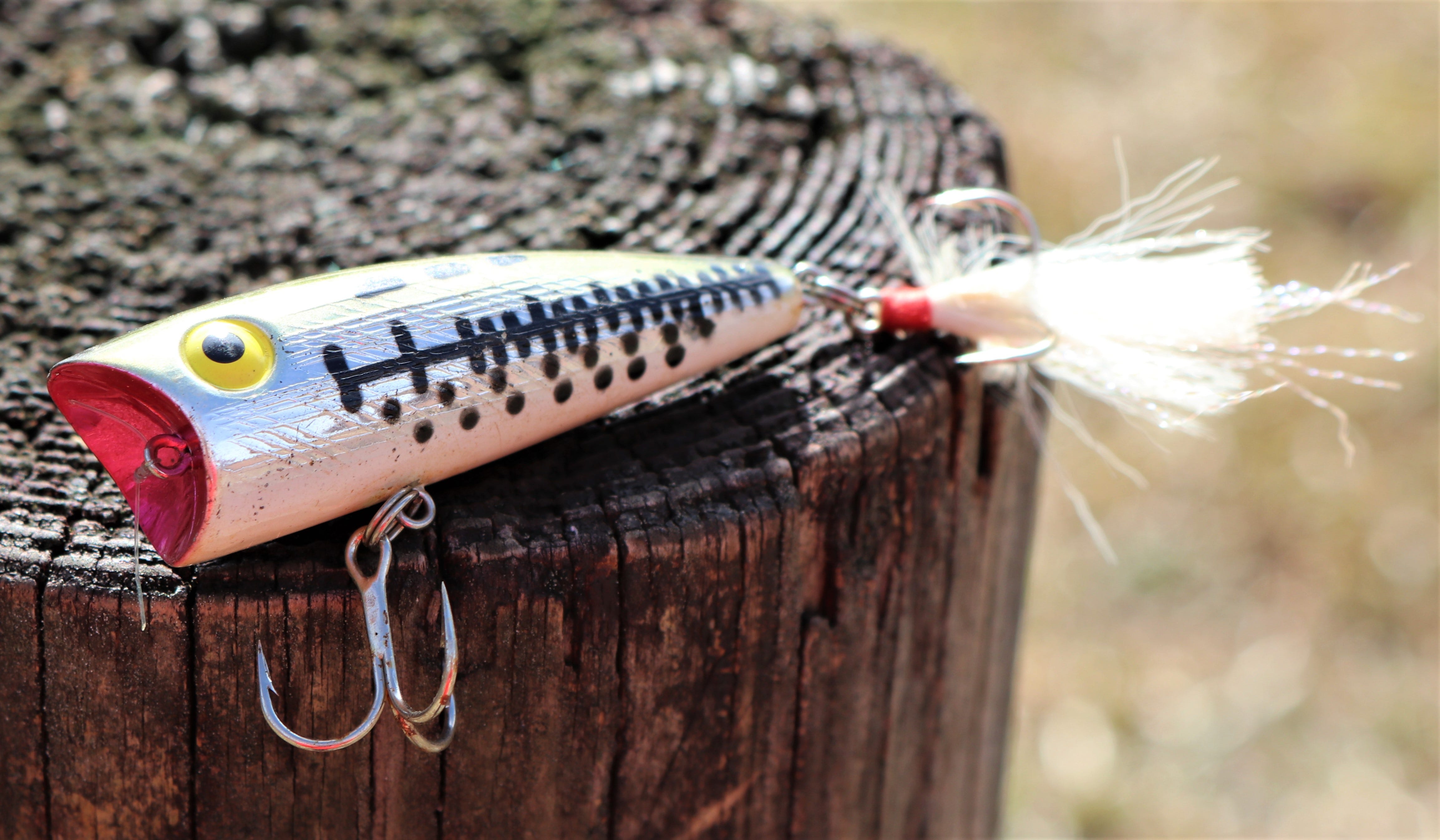

The P60 Pop-R is the original and still the most popular Pop-R. Measuring 2 1/2 inches and weighing 1/4 ounce, it’s sized perfectly to match small forage fish for bass and other gamefish and weighs just enough that it can be cast with light baitcasting tackle if that’s your preference. It comes with No. 6 treble hooks, and the back treble is dressed with a skirt.
The range of sounds that can be made to draw fish near and prompt strike is a big part what put the Pop-R on the map. A slow sweep chugs the lure, suggesting a gamefish feeding and making fish want to compete for food. Quick snaps with a slightly loose line create a sharp, defined pop. Rod angle also makes a significant difference in whether the bait chugs or spits as you work it. Countless sounds and actions fall in between, and the best Pop-R anglers tend to use a range of sounds and actions, like tools in a toolbox.
Similarly, a Pop-R can be moved along very quickly, with steady pops and the reel handle ever turning, to suggest a baitfish fleeing on the surface, or it can be worked very slowly to coax fish into attacking.
The P61 Pop-R Plus has the dimensions and design as the original Pop-R but comes with special finishes.
P71 Pop-R
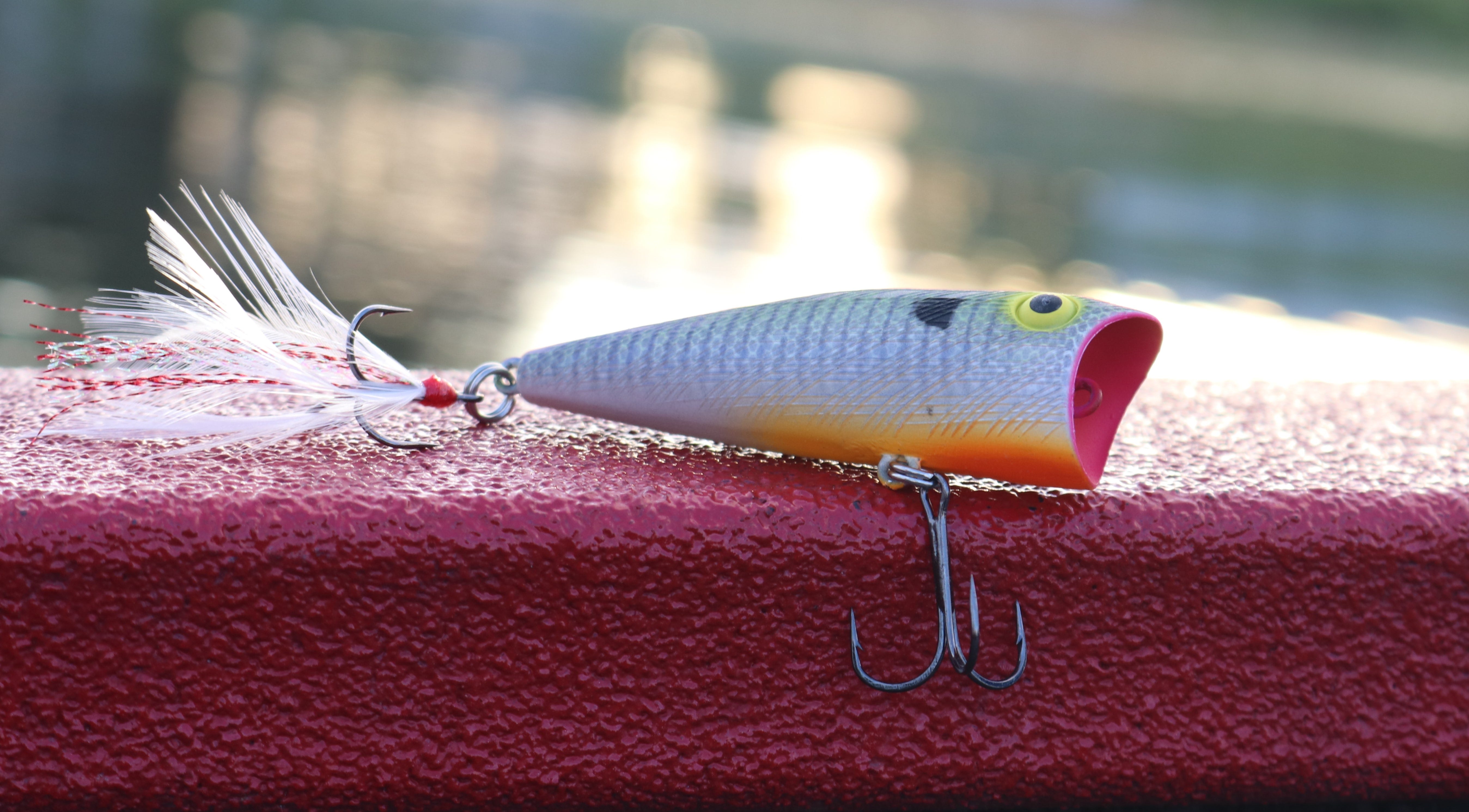

The P71 is the newest Pop-R, but in truth it’s not new at all. The model number is different, and it has upgraded hooks, but everything about this Pop-R’s design, size, materials and production procedures match the old P70, a discontinued favorite of many tournament bass fishermen that grabs big dollars whenever a used one shows up online.
The P71 is the largest Pop-R at 3 1/8 inches and 9/16 ounces and has a rattle in the back, which makes it easy to cast accurately to get close to cover. It also walks more easily than other Pop-Rs, rests tail-down on the surface, and can be used to make a commotion without moving it far horizontally. The butyrate body and back rattle also give it a distinctive sound.
Tournament bass anglers especially like the P71 for working over beds and fishing very tight to cover, but it’s an excellent option whenever you want the classic range of Pop-R sounds in an extra big package and the ability to work a spot very thoroughly.
Super Pop-R
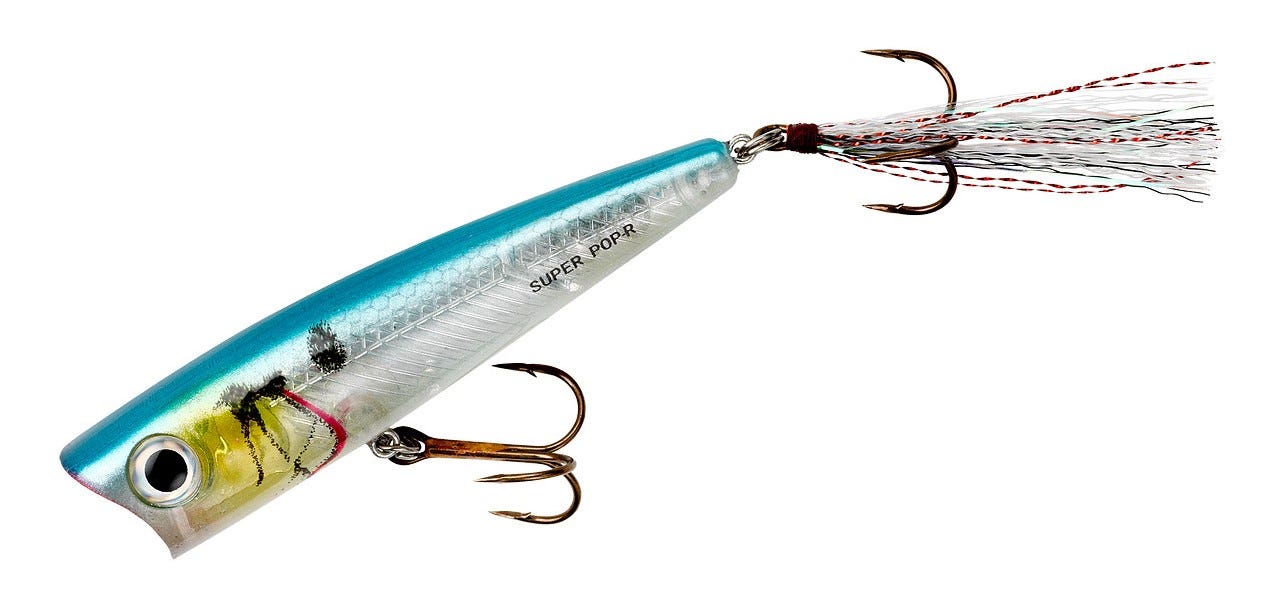

The P66 Super Pop-R differs from the original in a few ways. First, it’s larger. It’ 3 1/8 inches long and it weighs 5/16 ounce. That actually matches the numbers of the P71, but the Super Pop-R is more slender than other Pop-Rs and has more weighting inside it than the thicker-bodied P71. The extra slender profile makes this Pop-R an excellent choice for matching thinner baitfish like shiners and herring.
The Super Pop-R also has special extra-reflective slick finishes and a shimmery single-length skirt. It comes with No. 4 trebles.
What is NOT different about Super Pop-R is the way it moves in the water and the range of sounds that can made with it to prompt strikes.
Teeny & Magnum Pop-R
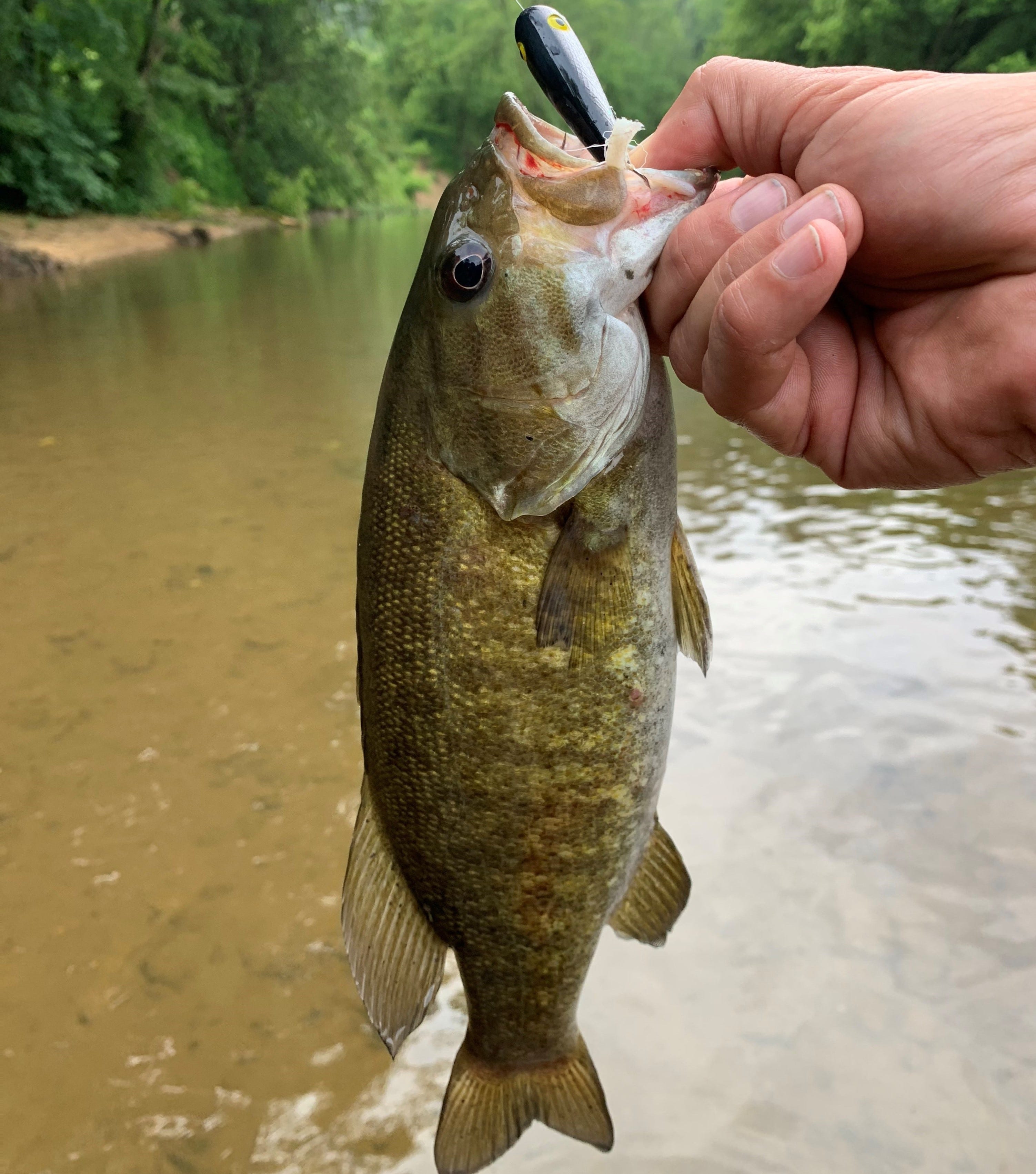

The Teeny Pop-R and Magnum Pop-R differ from the original Pop-R only in they ways you would expect. The Teeny Pop-R is smaller, and Magnum Pop-R is larger. Both are the same as the original in design, proportions and materials and act the same on the water.
The Teeny Pop-R is 2 inches long, weighs only 1/8 ounce and is equipped with No. 8 trebles. It is exceptionally well suited for fishing smaller cool-water streams and for ponds and for any time you want to offer a smaller profile but the same popping sounds. It’s best suited for spinning tackle and fairly light line (6- or 8-pound test).
The Magnum Pop-R is 3 inches long and weighs 1/2 ounce. It’s the perfect choice for imitating larger forage or simply gaining a bit of casting distance. It also can be fished on heavier tackle than a regular Pop-R, which can be important or getting bigger fish out of cover. The Magnum Pop-R is also a popular choice for targeting striped bass and inshore saltwater fish.
MicroPOP-R
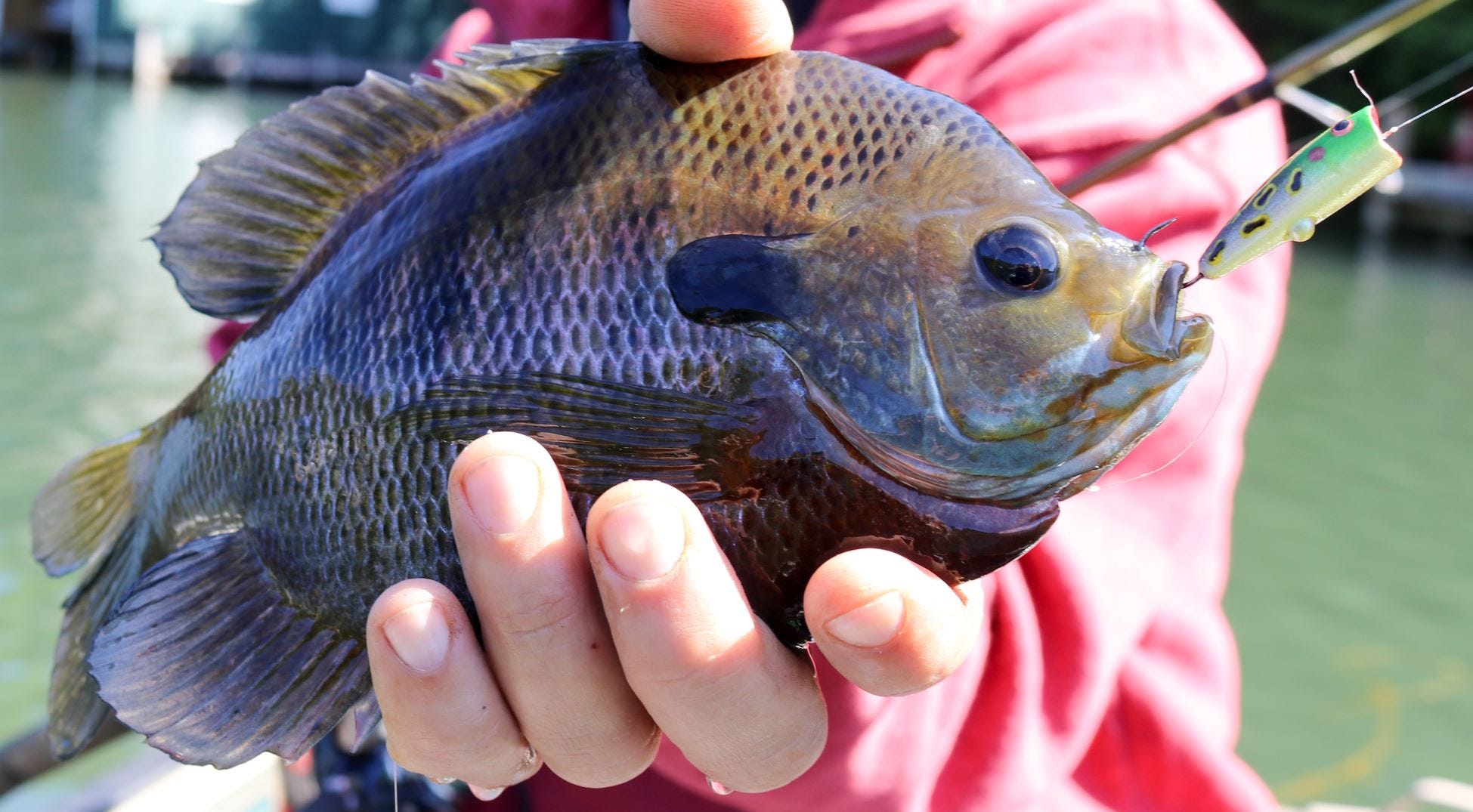

As the name suggests, the MicroPOP-R is super small, measuring on 1 1/4 inches and weighing 1/16 ounce. It is best fish on ultralight or micro fishing tackle and can even be cast effectively with a fly rod. You’ll catch an occasional large bass on the MicroPOP-R. However, it’s extra for good bluegills, rock bass and smaller black bass that cruise shallow water, ready to pounce on any terrestrial insect that finds itself a float
The MicroPOP-R is part of a Rebel’s Micro Series, which includes miniature versions of four popular Rebel lures. Like the others it’s the same as larger versions in functionality but features a single barbless hook instead of trebles hanging from the bottom.
A fun and highly productive bonus application is to tie a couple of feet of light mono leader to the hook of a MicroPOP-R and then tie a fly-fishing nymph to the end of that leader. The little popper serves double duty as fish attractor and bobber, and panfish will often slap at he surface offering a couple of times before they spot the nymph and nab the easy meal, causing the MicroPOP-R to race out of sight.
Tips for Pop-R Success
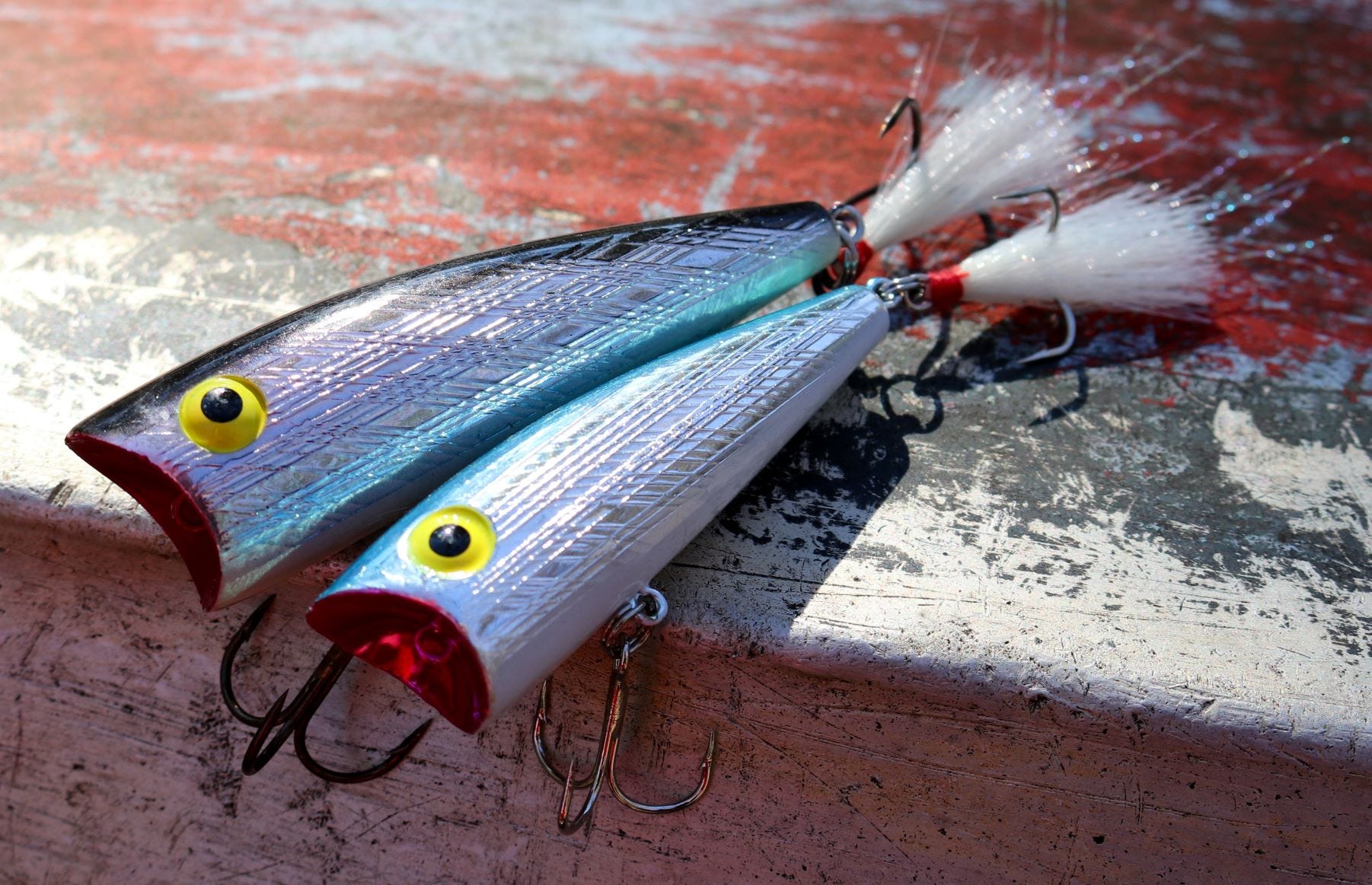

- Use sweeps to chug the bait and suggest a feeding fish and quick snaps to pop it and suggest a baitfish.
- Mix chugs and pops and vary your cadence, strategically changing things to trigger strikes in key locations.
- Use quick retrieves over points or broad feeding flats and slow presentations near specific pieces of cover.
- Attach with a loop knot to facilitate easier walking or a cinched knot for more control of lure sounds.
Lure That Almost Wasn’t
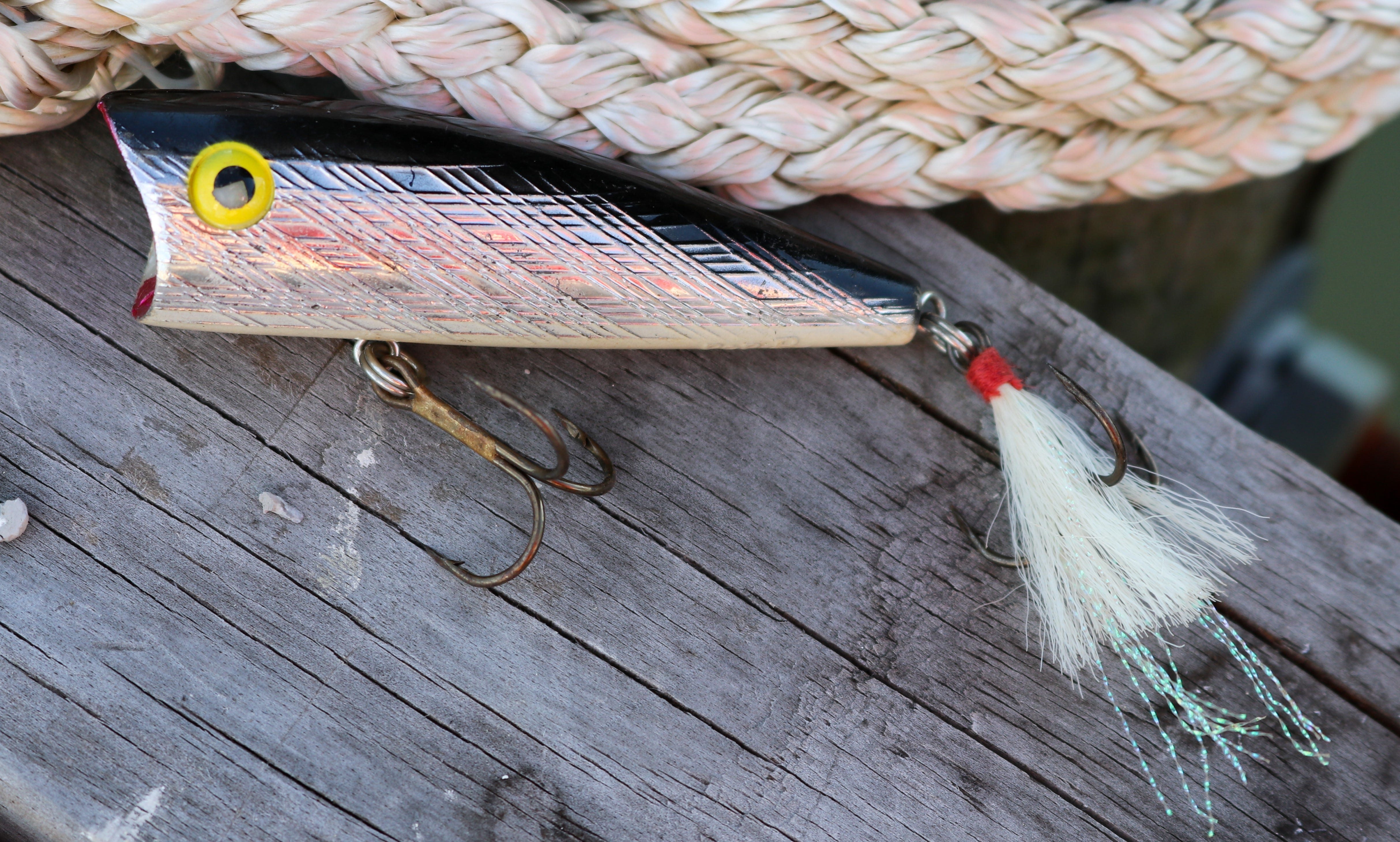

The Pop-R as we know it today almost did not make it. Early sales were slow after it was introduced in the 1970s, and it was pulled from the Rebel Lures catalog only a few years after it was introduced. However, a few top tournament anglers in Texas had discovered this bait’s magic. Shops would order special runs, and those pros would buy every one they could find. Eventually, word spread, and demand grew, and Rebel Lures brought back what would become one of the most popular topwater lures ever created.



